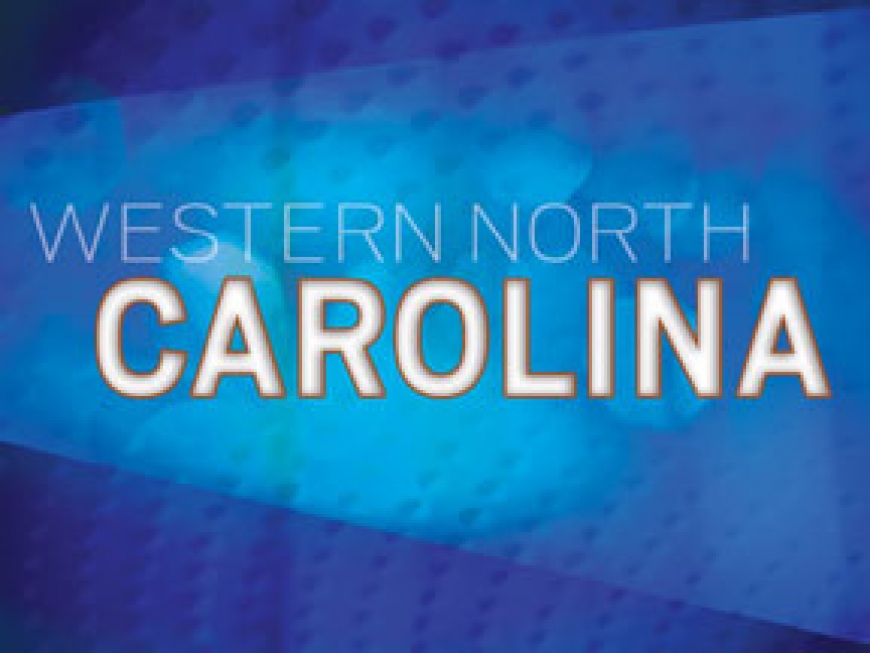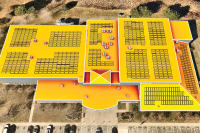The new norm difficult for schools

When the COVID-19 pandemic began spreading in North Carolina in March of 2020, public schools were forced to close their doors. First for two weeks, then for the rest of the school year. During that time teachers and administration worked hard to develop best practices on the spot for virtual learning.
Now, almost halfway through the 2020-21 school year, case numbers are the highest they have been since the pandemic began, much higher than the entire time North Carolina schools were closed for in-person learning. Schools in WNC have managed to keep spread minimal within their doors. But with holidays just around the corner, and case numbers still rising, there is very real danger of worse COVID spread.
Jackson County Interim Superintendent Tony Tipton has said his goal is to keep schools open.
“We feel like the safest place for students to be is in school,” said Kelly Doppke, director of student support services and part of the COVID response team. “We monitor, we social distance, we sanitize, we make them wash their hands. And if you look at our Jackson County COVID dashboard, you can see that we’ve got less than 0.05 percent of our students out right now with COVID.”
Jackson County Schools has regularly maintained a lower positivity percentage than Jackson County. Since Aug. 17, JCPS has reported a total of 12 staff cases and 20 student cases, six of whom are remote only learners.
Dr. Bill Nolte, superintendent of Haywood County Schools, is concerned about rising case numbers and the upcoming holiday season.
Related Items
“We’re very mindful of the situation. We will promptly respond to any state action. We have a very good relationship with local Medical Director Dr. Jaben, and if he suggests we should shut down because of clusters in the community, or more likely in the schools, we would do that,” said Nolte. “But we will try to address that on a case-by-case basis.”
According to Nolte, the administration is not aware of any positive cases that involved student transmission while at school. There have been transmission instances where students got together after school hours.
Recently at Pisgah High School there were five positive cases within one week, but after talking with public health officials, HCS did not deem the cases a cluster because the students were in different grade levels and classes.
“As best we could tell, with the information we had and the information that we received back from public health on their contact tracing, those folks were not connected,” said Nolte.
Haywood County Schools has had 43 positive cases among students and staff since Oct. 5.
“In terms of mitigation, we’re following the governor’s executive order, working closely with the Macon County health department,” said Macon County Schools Superintendent Chris Baldwin. “We’re following the social distancing protocols that are in place, the three W’s, requiring folks to wear the mask, wait six feet apart and wash their hands frequently. And yet, we’re watching the numbers closely.”
Macon County Schools has had a total of 28 positive staff cases and 32 positive student cases since August.
In addition to quarantining students and staff who have had close contacts with a positive case in schools, schools have worked out ways to maintain regular social distancing and use pods to mitigate possible spread. Due to the logistics of these guidelines, students and parents have had to choose whether or not they would be on the rotating in-person learning schedule, or fully remote.
Jackson County Schools allowed parents to choose for students to return to face-to-face learning following the first nine weeks for grades K-8. Those that chose remote learning at that time, were committed for the remainder of the year. The requirement to commit for the rest of the year was based on a need to plan for school operations in a meaningful way.
School and district leaders needed to plan for the number of teachers needed at each grade level to support both face-to-face and remote learning. Students in grades 9-12 that chose remote learning were committed for the semester, and registration is underway now for spring semester. Students can choose to go back to face-to-face for spring semester or remain remote for the remainder of the year.
Jackson County Schools started the year with 37 percent of students opting for remote instruction. That number shrank after the first nine weeks. As of Nov. 5, 75 percent of JCPS students are participating in face-to-face learning and 25 percent are fully remote.
Macon County Schools has asked middle and high school students to choose remote or in-person learning for the entire semester.
“We have implemented the policy at the middle and high school that if a student chooses to become a virtual student, that is a semester long decision,” Baldwin said.
Schools around the country reported problems with student engagement after schools went fully remote at the beginning of the pandemic this spring. Now, that problem looks to be persisting for some students.
“Students who are attending and are engaged are doing well. And by attending that means attending remotely or attending face-to-face. So students who are doing what their plan of academics is supposed to be, are doing well. Students who are what I call ‘off our radar’ are not doing well,” said Doppke. “We continue to remind families that we’re not getting an academic pass this year. All of our accountability standards and models are in place for the state. And so it’s important that students be engaged so that we can give them credit for their courses.”
The bottom line, Doppke says, students have to be engaged and communicating with teachers to be successful.
“There’s definitely going to be a COVID-19 slide,” said Baldwin. “The frustrating thing for us is that the students who are falling behind now are going to be very difficult to reach in terms of a summer school program or credit recovery program next year, for the same reasons that they’re struggling around now. They may have connectivity issues. They may have transportation issues. Those same limitations are going to be in place in the summer and in the fall. So we’re very concerned about these students who are behind academically and how we’re going to get them to where they need to be for school year [2021, 2022] and beyond.”
“We don’t want to send any messages that it’s an automatic credit because the state is very consistently telling us that is not the case,” said Nolte. “Our students who are in-person are pretty well engaged. Our remote only students, we have a pretty large proportion of folks that we’re just not hearing from.”
Attendance is a different story. Because of the obvious fluctuation in students’ ability to be in school due to COVID positivity or the need to quarantine following exposure, attendance will be dealt with differently than in years past. Attendance is policy mandated by each local school board, so school systems have more flexibility to implement a policy that will best serve students during this time.
“We are accepting more parent notes, we’re not requiring medical notes. But once they have 10 days unexcused, we’re problem-solving and trying to figure out what the barrier is because after 10 days there is a potential for a reduction in grade or a non-course pass, not passing that course,” said Doppke.
“If a student submits their work, then we can count them as being present. Obviously the issues that we’re seeing is that students aren’t submitting their work. So then it’s a twofold problem. Their work isn’t counted because they don’t submit it or they’re unable to submit it. And then because they’re not able to submit to work, they’re also counted absent. So attendance in the virtual academy has been a real problem,” said Baldwin.









